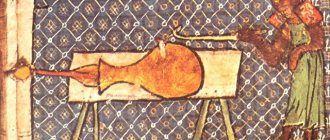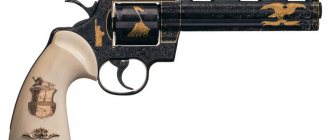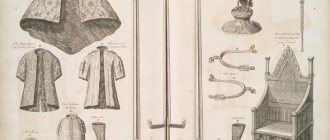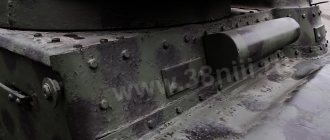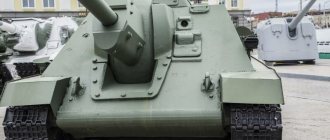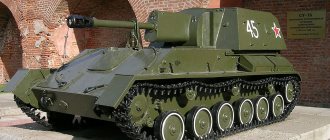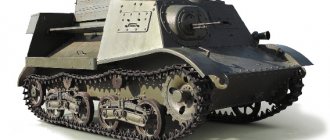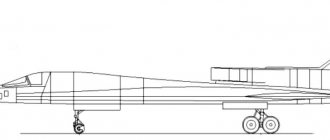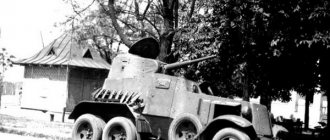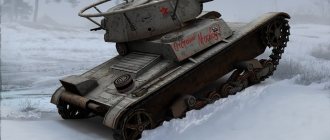Kinds
Our legislation divides all firearms into:
- civilian samples;
- service samples;
- military hand weapon.
Combat pistols and machine guns are available only to such categories of citizens as military personnel, law enforcement officers, and representatives of other paramilitary government organizations (the weapons are in service with the special services). For this reason, we will not dwell on it in detail in this article, but will consider those types of firearms that are available to other broader categories of citizens.
Official
The Makarov pistol is a prominent representative of service weapons
According to the law, service “firearms” are available to those officials who, by the nature of their activities, are obliged to protect the life and health of people, important objects, engage in environmental protection, and engage in collection.
Basic list of requirements:
- should not fire in bursts;
- visually identifiable differences from samples of military small arms;
- the magazine can hold a maximum of 10 rounds;
- lead-filled bullets, hard metal cores are prohibited;
- compliance with state standards of the Russian Federation.
They are produced in smooth-bore and rifled versions, with long and short barrels. Muzzle energy – maximum 300J. Private security companies can arm themselves.
Weapon of the century. The best small arms in 100 years
Rating of the magazine "Popular Mechanics"
Most common rifle: M16
Country: USA Developed: 1959 Weight: 2.88–3.4 kg (depending on modification) Length: 986–1006 mm Caliber: 5.56 mm Rate of fire: 700–900 rounds/min Muzzle velocity: 948 m/s
The rifle was developed by the American company Armalite, in 1959 the Colt company began its production, in 1961 the US military department purchased an experimental batch of rifles, and in 1964 it entered service with the US Army. To this day, the M16 remains the main weapon of the American infantry. It underwent its first serious baptism of fire in Vietnam, and was subsequently used in all armed conflicts involving the United States. This is a 5.56mm automatic rifle; its automation is based on the use of the energy of powder gases. Today, there are more than 20 modifications and varieties of the rifle, and it is produced not only in the USA, but also in Canada, South Korea, China, Iran, and Germany.
The most famous machine gun: Maxim machine gun
Country: Great Britain (modification – Russia) Developed: 1883 (modification – 1910) Weight: 64.3 kg (44.23 – machine with shield) Length: 1067 mm Caliber: 7.62 mm Rate of fire: 600 rounds/min Muzzle velocity : 740 m/s
It is difficult to say that the Maxim is included in the list of the best small arms over the past 100 years, because the Anglo-American inventor Hiram Maxim received the first patents for individual elements of the new weapon in the summer of 1883, and in October 1884 he demonstrated the first working model. But one of the most famous varieties of “Maxim” appeared in 1910, which allows it to “fit” into the century.
The principle of operation of the Maxim is simple and is based on the use of barrel recoil. Powder gases from the shot throw the barrel back and activate the reloading mechanism: the cartridge is removed from the belt and goes into the breech, while the bolt is cocked. The canvas belt held 450 rounds of ammunition, and the machine gun's rate of fire reached 600 rounds per minute. True, the powerful weapon was not flawless. Firstly, the barrel overheated greatly and required constant changes of water in the cooling casing. Another drawback was the complexity of the mechanism: the machine gun jammed due to various problems with reloading.
In Russia, production of the machine gun began in 1904 at the Tula plant. The most famous Russian modification of the Maxim was the 7.62 mm heavy machine gun of the 1910 model (the original caliber of the machine gun was .303 British or 7.69 mm in the metric system). In the same year, the designer, Colonel Alexander Sokolov, designed a wheeled machine gun for a machine gun - it was this machine that gave the weapon a classic look. The machine greatly simplified the issues of marching and moving a heavy machine gun from position to position.
But the total weight of the machine gun with the machine was still large - more than 60 kg, and this does not count the supply of cartridges, water for cooling, etc. Therefore, by the 1930s, the formidable weapon was rapidly becoming obsolete. The Soviet-style machine gun underwent its last modernization in 1941 and was produced in Tula and Izhevsk until the very end of World War II; it was replaced by a 7.62-mm Goryunov machine gun. "Maxim" had many modifications: Finnish M/32-33, English "Vickers", German MG-08, 12.7 mm (large caliber) for the British Navy, etc.
The most legendary weapon of the Second World War: 7.62 mm Shpagin submachine gun
Country: USSR Developed: 1941 Curb weight: 5.3 kg with drum magazine, 4.15 kg with sector magazine Length: 863 mm Caliber: 7.62 mm Rate of fire: 900 rounds/min Firing range: 200–300 m
The predecessor of the Kalashnikov assault rifle in service with the Soviet army was the Shpagin system submachine gun (PPSh). Created to replace the Degtyarev submachine gun, the PPSh was primarily designed to simplify production as much as possible and entered service in 1941. And although the Sudaev model 1942 design (PPS) is often considered the best submachine gun of World War II, it was the PPSh that became an integral part of the image of the Soviet soldier as the only mass-produced automatic weapon of the Soviet army in the first year of the war.
Fastest firing weapon: Metal Storm MK5
Country: Australia Developed: 2004 Number of barrels: 36 Caliber: 9 mm Estimated rate of fire: 1,080,000 rounds/min Theoretical maximum rate of fire: 1,620,000 rounds/min
The ultra-high-speed weapon of the Australian company Metal Storm Limited is unlikely to ever go into mass production, but it cannot be ignored. The company's founder, James Michael O'Dwyer, invented and patented a rapid fire system, the theoretical rate of fire of which reaches 1,000,000 rounds/min. The Metal Storm machine gun has no moving mechanical parts, each barrel simultaneously holds several cartridges, and shots are fired via an electronic pulse. The critical problem that the developers faced was the impossibility of supplying such a number of cartridges in a timely manner. Therefore, the rate of fire shown in tests is calculated, and the functionality of the “iron storm” is nullified when used in real combat. However, the company is developing in various directions and is using Metal Storm technologies in weapons that have a more realistic chance of being included in the series.
Most popular pistol: Colt M1911
Country: USA Developed: 1911 Weight: 1.075 kg Length: 216 mm Caliber: 45 Muzzle velocity: 253 m/s Sighting range: 50 m
One of the most popular pistols in the world is the John Browning-designed M1911 chambered in .45 ACP (11.43 x 23 mm). This weapon was in service with the US Army from 1911 to 1990, and the pistol has not undergone any modernization since 1926. Despite the name of the developer, the pistol was produced by Colt factories and went down in history as the “Colt M1911.” Its main advantage was its design simplicity and fault tolerance. The pistol was in service in more than 40 countries around the world and is extremely popular to this day.
The most multi-shot gas pistol: Reck Miami 92 F
Country: Germany Weight without cartridges: 1.14 kg Length: 215 mm Caliber: 8, 9, 15 mm Food: magazine for 11 (for the 9 mm version), 18, 20, 24, 28 rounds
RECK Miami 92F is a gas pistol manufactured by the German company Umarex, which is an exact copy of the classic Beretta 92 pistol. RECK gas pistols come in 8 and 9 mm calibers. The 9mm version has a completely ordinary magazine with a capacity of 11 rounds, but 8mm RECK Miami magazines can hold from 18 to 28 (!) rounds, depending on the modification. Apart from prototypes, oddities and a 40-round magazine for the Mauser, the RECK Miami 92F has no competitors in the field of multi-charging.
Fastest-firing production weapon: M134 Minigun
Country: USA Developed: 1962 Weight: 24–30 kg (machine gun body with electric motor and power mechanism) Length: 801 mm Caliber: 7.62 mm (0.308) Rate of fire: from 300 to 6000 rounds/min (effective – 3000–4000) Initial bullet speed: 869 m/s
Of course, prototypes can be much faster-firing, but among production weapons, the aircraft machine guns of the M134 Minigun series are considered to be among the record holders for this indicator. These 7.62 mm six-barreled machine guns operate in a Gatling design and are capable of firing up to 6,000 rounds per minute. A new cartridge is fed into the upper (cooled) barrel, and the shot is fired from below. The rotation of the barrels is provided by an electric drive. The M134 received its baptism of fire in the Vietnam War. By the way, contrary to misconceptions, in “Predator” and “Terminator” it is not this machine gun that is used, but its younger brother, the XM214 Microgun, which did not go into production.
The most officer's pistol: Mauser C96
Country: Germany Developed: 1896 Weight without cartridges: 1.13 kg Length: 288 mm Cartridge: 7.63 x 25 mm, 9 mm x 25 mm, etc. Muzzle velocity: 425 m/s Effective firing range: 150–200 m without butt
The Mauser C96 evokes in us a strong association with a man in a leather jacket and the abbreviation Cheka. This model began to be produced in Germany in 1896; the pistol stood out for its excellent accuracy, high effective firing range, and “survivability”; Its main disadvantages were bulkiness and serious mass. What is surprising is that the Mauser was not officially in service with any army in the world (maximum - partial local use), while more than a million copies were produced, and officers from different countries preferred it as a personal weapon to all competitors.
The most famous repeating rifle: M1 Garand
Country: USA Developed: 1936 Weight: 4.31–5.3 kg (depending on modification) Length: 1104 mm Caliber: 7.62 mm Muzzle velocity: 853 m/s Effective firing range: 400 m
The American M1 Garand rifle is the first self-loading rifle adopted as the main infantry weapon. It took a long time to implement: in 1929, designer John Garand built the first prototype, but it only reached serial production and service in 1936; Numerous modifications did not give the desired effect, and the new weapon constantly failed. Only the M1 generation, which was modified and put into production in 1941, gained popularity. It is still used as a sporting weapon to this day.
Most common weapon: Kalashnikov assault rifle
Country: USSR Developed: 1974 (modification of AK-74) Curb weight: 3.5–5.9 kg Length: 940 mm (without bayonet) Caliber: 5.45 mm Rate of fire: about 600 rounds/min Effective firing range: 1000 m
The Kalashnikov assault rifle, the most widely used small arms in the world, has gained extraordinary popularity due to its reliability and ease of maintenance and has been produced in quantities of more than 100 million copies. There are several dozen of its modifications; in the original version (AK-47) it had a caliber of 7.62 mm, but the AK-74 modification uses a 5.45 mm cartridge, and in the “hundredth” series variants it also uses a 5.56 mm cartridge. In addition to the USSR, the machine gun was produced in Bulgaria, Hungary, East Germany, China, Poland, North Korea, Yugoslavia, and it was used in almost all countries of the world and in almost all armed conflicts of the second half of the 20th century.
